

The Wildlife Professional: Live-streaming brings remote learning into the field
By Joshua Rapp Learn
The global COVID-19 pandemic changed the course of education, including how professors taught wildlife management classes. It's difficult for students to collar a deer or capture frogs when they're in lockdown in their parents' basement, after all.
But TWS member Shelby McCay, project coordinator at the Texas A&M University's Natural Resources Institute, had the perfect prescription for the challenges online learning caused for her students.
McCay teaches a course at Texas A&M on wildlife habitat management. The class has always been online, even before the pandemic lockdown. She has used videos to help students visualize things like prescribed fires, which are difficult to observe in person, even without a quarantine in place. When the pandemic shifted almost all classes online, McCay and her colleague Roel Lopez, director of the institute and also a member of TWS, decided to take what she was already doing and make the experience more immersive.
Using the 5,500-acre Bamberger Ranch Preserve for her on-location production, McCay set up three cameras on a tripod to get a 360-degree view and live-streamed video presentations from the nonprofit preserve to students enrolled in her class once a week for five weeks.
For one of her lessons, she and her colleagues set a controlled burn on the central Texas preserve, which is also known as Selah. As part of a system they called "Leopold Live!" McCay's team posted the video on the Natural Resources Institute's Facebook page. The 360-degree camera allowed students to watch different angles to see how wildlife managers use prescribed fire to improve habitat for species like Rio Grande wild turkey (Meleagris gallopavo intermedia) and northern bobwhite (Colinus virginianus). Using the chat function, students could ask the people setting flames with a drip torch about their techniques and goals.
"This was as close to the field as they could get," said McCay, who described the system in a paper published in the Wildlife Society Bulletin.
Other classes focused on different aspects of wildlife management, each based on one of wildlife management pioneer Aldo Leopold's five tools for restoring game species - the axe, plow, cow, fire and gun. They put a camera on a tractor mowing brush, showed how cattle grazing affects the ecosystem and illustrated other management lessons.
Students were quizzed at the end of each class. As a final assignment, they were expected to write their own wildlife management plan for a real landowner.
The technique had its challenges, like trying to make wireless hot spots work in remote areas. But McCay says that while the university doesn't have the resources to repeat the live-streaming experiment, she still uses the videos she recorded during the immersive course.
"This is still a valuable technique and method to reach audiences live," she said, and it's one other professors could employ to teach fieldwork techniques remotely. It also gets good grades from students.
"We had very positive responses," McCay said. "The students really liked it."
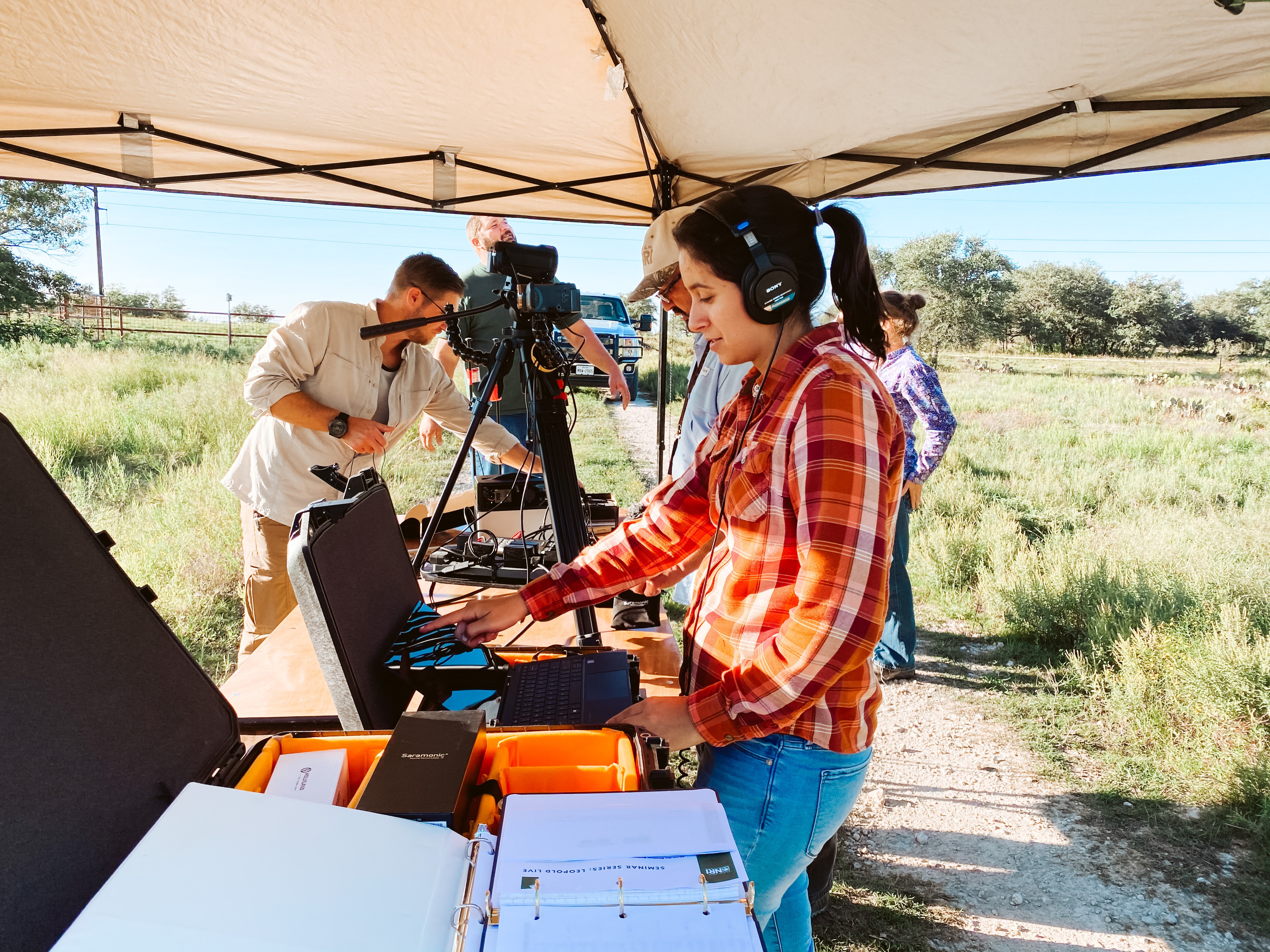
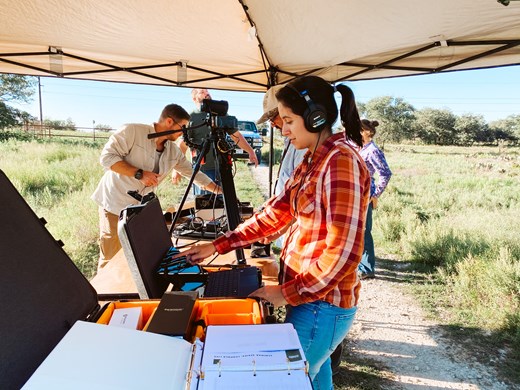
Shelby McCay and her team set up and test equipment before filming a live class episode of "Leopold Live!"
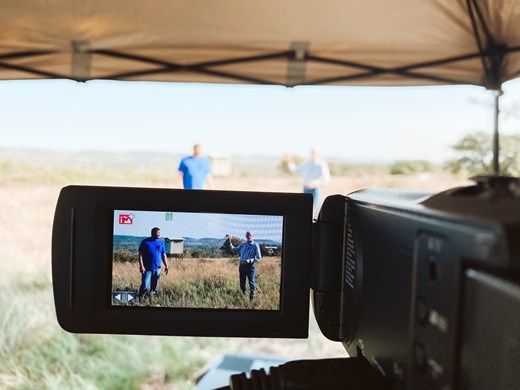
Bamberger Ranch Preserve's manager Steve Fulton and retired Texas Parks and Wildlife Department biologist Mike Krueg talk to students during a live class.
--
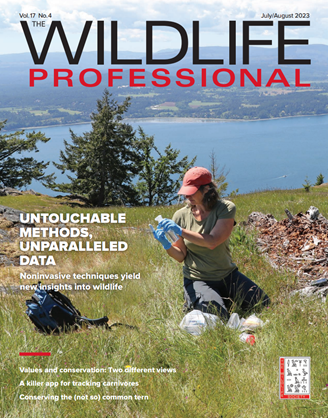
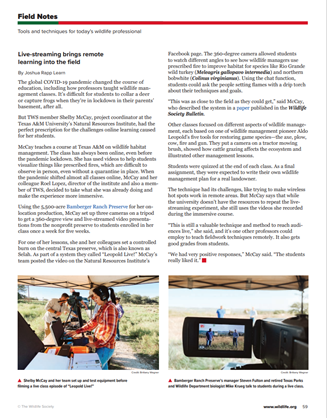
Originally published in The Wildlife Professional, Vol. 17, No. 4, July/August 2023
Learn More
Private Land Stewardship Academies
Training land stewardship professionals working with private landowners and educating a community of practice on the importance of science-based conservation. Click Learn More for free access to resources.







